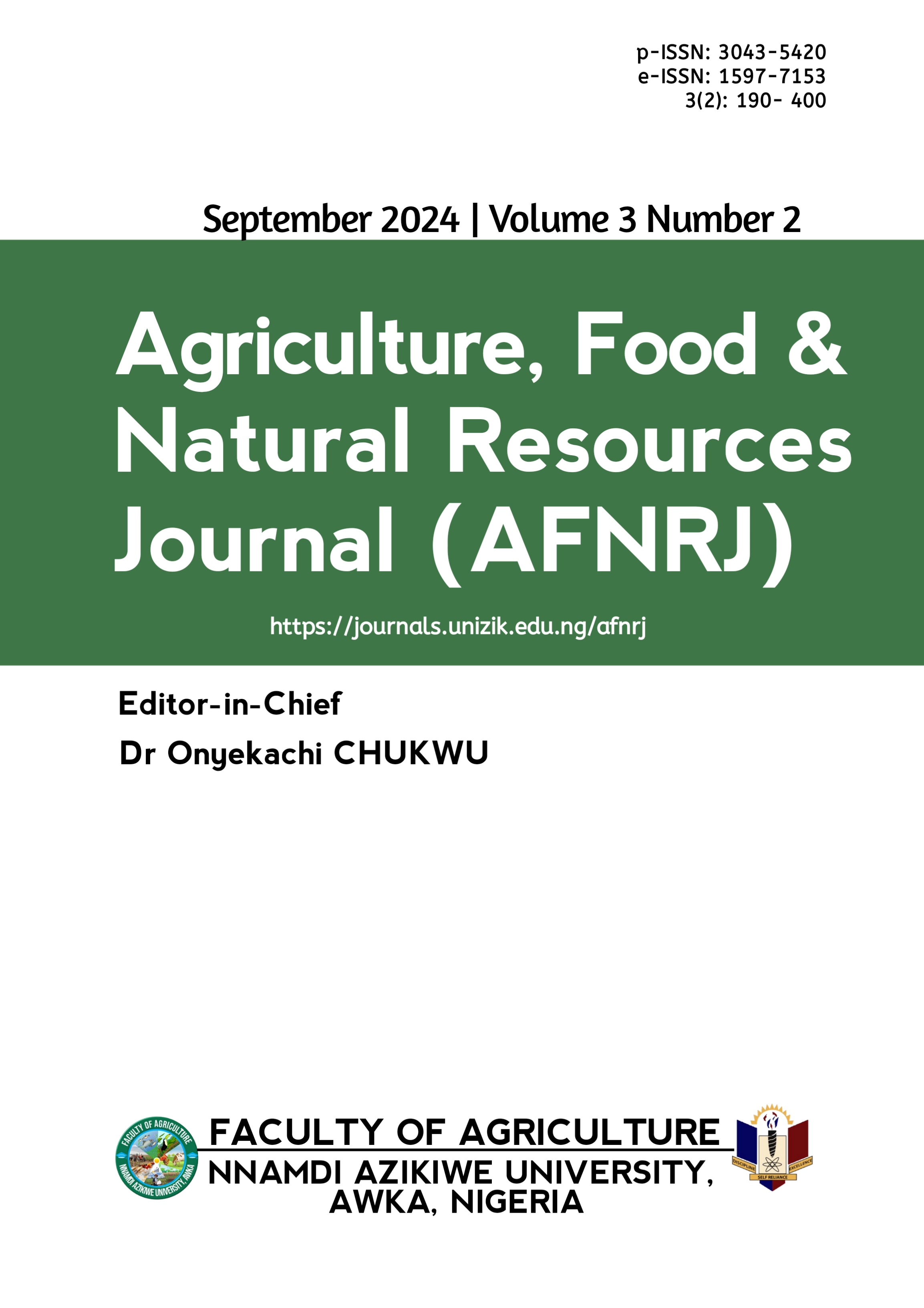Impact of land use on the seasonal diversity of soil mesofauna in the Okomu Forest Reserve, Nigeria
DOI:
https://doi.org/10.5281/zenodo.14179530Keywords:
Abundance and diversity, Land use systems, Mesofauna, Season, Soil depthAbstract
This study was carried out to examine the effect of land use systems on the seasonal diversity and abundance (A) of soil mesofauna in the Okomu Forest Reserve (OFR), Edo State, Nigeria. Three land use systems were considered for the study: Okomu National Park (ONP), the Okomu Rubber Plantation (ORP), and the Okomu Oil Palm Plantation (OOP). Two transect lines were laid with eight plots measuring 25 m × 25 m in size in each land use system. The data were collected during the dry and rainy seasons of the year using a systematic sampling method. Soil samples were collected at soil depths of 0–15 cm and 15–30 cm. Data were subjected to Shannon-Wiener Diversity Index (Hi) and analysis of variance. Soil mesofaunal diversity and abundance were greater during the rainy season (Hi = 19.91 and A = 8331). The ORP had the highest (Hi = 3.34 and A = 1548), followed by OOP (Hi = 3.32 and A = 1548) and ONP (Hi = 3.32 and A = 1396). The land-use system significantly (p < 0.00) influenced the diversity and abundance of the soil mesofauna. However, season significantly affected the diversity of soil mesofauna but had no significant (p > 0.51) effect on the A. Additionally, soil depth had no significant (p > 0.33) effect on the diversity but significantly (p < 0.00) influenced A. The diversity and abundance of soil mesofauna in the study area are attributed to plant-based energy and an influx of food sources in the soil.
Downloads
Published
Issue
Section
License
Copyright (c) 2024 Olarewaju John AKINBI, Sunday Adeniyi ADEDUNTAN, Olaniyi Thomas ALAMU

This work is licensed under a Creative Commons Attribution 4.0 International License.
which permits unrestricted use, distribution, and reproduction in any medium, provided the original author and source are credited.
Authors retain the copyright of their published work in the AFNRJ.





